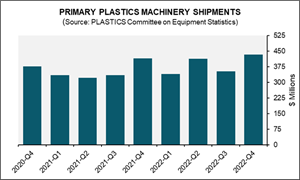New Software Makes 3D CAD Easier To Learn, Use and Afford
You can now can leapfrog the previous obstacles of cost, complexity, and a long learning curve.
New user interface
The company says its new and unique approach to a Windows-based user interface makes thinkdesign 6.0 both easier for new users to learn and 50% to 100% faster to utilize for a given task. Among several new features, one of the most important is breaking up the traditional dialog box into "mini dialogs," which are placed strategically in the graphics window. This avoids obscuring the graphics window with the distracting dialog box, and it closely associates individual mini-dialog input parameters with the geometric attributes they control. By contrast, normal dialog boxes provide no intuitive connection between the data being entered and the graphical result of the entry. Long textual explanations in the dialog boxes are often required to fill this conceptual gap, which is eliminated with the new "mini dialogs." For example, you can dynamically add draft by typing directly into the label of a "handle" on the model.
A similar benefit is provided by the new Selection List Browser, which guides users through complex commands where many different elements must be selected. It functions much like a "wizard" but floats above the graphics window instead of obscuring it with additional drop-down windows.
The new user interface provides immediate display of dimensions and angles while sketching. You can modify the values by typing directly into the numerical labels.
Also new is a graphical preview of the effects of all commands prior to execution. And a revised "history tree" of model creation displays the youngest feature at the top, not at the bottom, so there is no need to scroll down.
Voice input is another new element of the user interface that can greatly improve productivity. It provides a third option for entering commands or numerical inputs, complementing the mouse and keyboard. Several hundred voice commands—starting with the most basic, like Zoom, Redraw, Line, and Fit View—can be understood by the software. Voice commands eliminate digging through on-screen menu trees of commands.Voice numerical input also reduces typing errors, according to think3 sources.
More speed, less effort
Many hours of work can be saved with new "smart objects," which let you capture and quickly reuse predefined or user-defined "intelligent" design elements (profiles, solids, and shapes) of any level of complexity. Users can capture the "design intent" of an object, including parameters and constraints, and save it in a library. Objects from that library can then be dragged and dropped into a new context, and they'll automatically adapt themselves to the new context. For example, an object consisting of a rectangular basin with a certain defined draft can be dropped into a circular part and it automatically morphs into a circular basin with the same draft and other constraints. Likewise, a boss that was initially created for a flat surface can be transferred to a curved or filleted surface, where it automatically blends with that surface. If placed too near the edge of a part, the "smart boss" object will automatically add material to the profile of the part to maintain the boss's prescribed thickness. A boss with a through hole can be added to two adjoining plates simultaneously (a feature that could be very handy in mold design). And by editing or suppressing features, such as a hole in the center, the same smart object can be used to create a circular boss or a rectangular rib.
Thinkdesign 6.0 comes with a starting library of "smart profiles," which are 2D shapes that can be converted to 3D by "sweeping" along a linear or rotational axis. For example, a circular profile can be swept into either a cylinder or a ring.
Precision global shape modeling is said to be a completely new technology in thinkdesign 6.0. It allows complex whole shapes composed of solids, surfaces, or wireframes to be bent, twisted, or otherwise modified with great precision—without the need to define all surfaces. One can deform a collection of trimmed surfaces by displacing any random point by any distance. The whole shape can thus be stretched or warped interactively in real time while retaining constraints specified for the parts you don't want to change. One use of this feature could be to "warp" an existing mold design to counteract anticipated shrinkage/warpage effects.
Another extremely powerful new feature is fully associative curve, surface, and solid modeling. In thinkdesign 6.0, surface and solid modeling tools are indistinguishable from one another. Thus you can select the right command for the job without concern for whether the shape is created from a curve, surface, or solid. Used together with precision shape modeling, this associativity makes it simple to accomplish otherwise extremely complex modifications of models. For example, you can "tug" on the skin of a solid/surface model of a kayak to produce a thicker or thinner profile while retaining constraints such as the same shape and size of the opening. In the case of a mold design, you can modify a core and cavity simultaneously, changing the shape or size while ensuring that cooling channels and other features move accordingly.
‘Off-the-shelf' PDM
The Project Browser feature within thinkdesign 6.0 can store design data and relate them to other documents on engineering releases, end uses, etc. An optional add-on module called thinkteam 6.0 provides extensive tools for engineering data management. These functions include automatic relationship tracking of part numbers, documents, and bills of materials; version control for documents and parts; exploded or indented bills of materials; export wizards for integrating the thinkdesign bill of materials with external MRP or PDM systems; and export in Excel or other file formats.
No purchase required
A one-year subscription for the new software is available for $1995 with no upfront licensing fee. For a limited time, a package of thinkdesign 6.0 and thinkshape 6.0 is offered for $2395/yr. A thinkteam 6.0 subscription costs $995/yr. The fee includes twice-a-year updates and access to on-line training and technical support.
Related Content
Advanced Drainage Systems to Build New Florida Manufacturing Facility
New manufacturing facility will complement other ADS facilities in the southeast region.
Read MoreCross-Linkable Formulations for Photovoltaic Cables
Avient’s Eccoh XL 8148 PE-based formulations support the rising need for solar power generation.
Read MoreInfrastructure May Prove Big Landing Spot for Recycled Plastics
As the government funds infrastructure improvements, a hot topic at NPE2024 – exploration of the role recycled plastics can play in upcoming projects, particularly road development.
Read MorePlastics Machinery Shipments Rose in 2022’s Final Quarter
The Plastics Industry Association’s (PLASTICS) Committee on Equipment Statistics (CES) reported that injection molding and extrusion machinery shipments totaled $432.7 million in Q4.
Read MoreRead Next
People 4.0 – How to Get Buy-In from Your Staff for Industry 4.0 Systems
Implementing a production monitoring system as the foundation of a ‘smart factory’ is about integrating people with new technology as much as it is about integrating machines and computers. Here are tips from a company that has gone through the process.
Read MoreMaking the Circular Economy a Reality
Driven by brand owner demands and new worldwide legislation, the entire supply chain is working toward the shift to circularity, with some evidence the circular economy has already begun.
Read More




















